| Recent Featured Videos and Articles | Eastern “Orthodoxy” Refuted | How To Avoid Sin | The Antichrist Identified! | What Fake Christians Get Wrong About Ephesians | Why So Many Can't Believe | “Magicians” Prove A Spiritual World Exists | Amazing Evidence For God | News Links |
| Vatican II “Catholic” Church Exposed | Steps To Convert | Outside The Church There Is No Salvation | E-Exchanges | The Holy Rosary | Padre Pio | Traditional Catholic Issues And Groups | Help Save Souls: Donate |  |
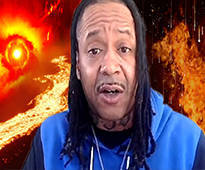
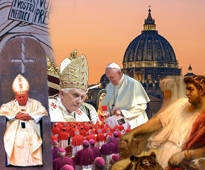
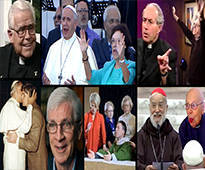
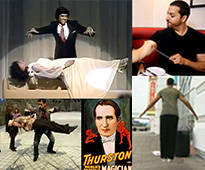
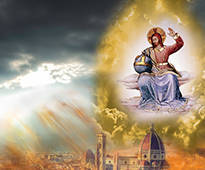

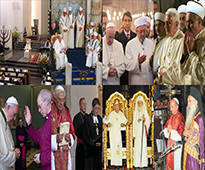


 " />
" /> " />
" />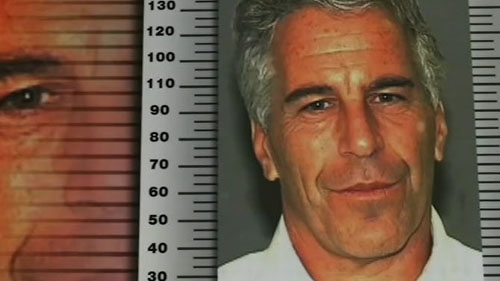 " />
" />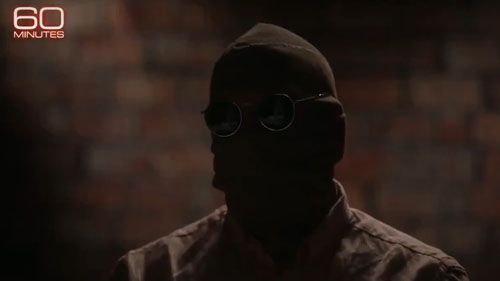 " />
" />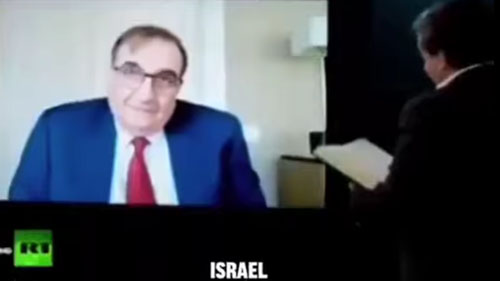 " />
" />




Was Vatican II Infallible?
ARTICLE:
WAS VATICAN II INFALLIBLE?
BRO. PETER DIMOND
SECTIONS COVERED:
-INTRODUCTION
-JOHN XXIII’S OPENING SPEECH AT VATICAN II, OCT. 11, 1962
-JOHN XXIII SAYS THAT VATICAN II WILL BE AN ACT OF THE UNFAILING MAGISTERIUM
-JOHN XXIII SAYS THAT VATICAN II WILL BE THE EXTRAORDINARY FORM OF THE MAGISTERIUM
-JOHN XXIII SAYS THAT VATICAN II WILL BE A DOCTRINAL COUNCIL
-COMMON MISCONCEPTIONS AND LIES REFUTED
-JOHN XXIII DECLARES THAT VATICAN II’S PRINCIPAL DUTY WILL BE TO DEAL WITH, TRACE OUT, EXPOUND, AND PRESENT CHRISTIAN DOCTRINE
-“PASTORAL” - VATICAN I CONNECTED PAPAL INFALLIBILITY WITH A POPE’S “SUPREME PASTORAL OFFICE”
-ANTIPOPE PAUL VI REFERS TO VATICAN II’S TASK OF DEALING WITH AND DEFINING DOCTRINE
-THE THEOLOGICAL NOTE ATTACHED TO LUMEN GENTIUM FURTHER DISPROVES THEIR POSITION
-REFUTING THE OBJECTION FROM PAUL VI’S DEC. 7, 1965, SPEECH
-THE DEATH-BLOW: VATICAN II, WHILE PURPORTING TO BE MAGISTERIAL, FORMALLY “DECLARED” THAT ITS FALSE TEACHING ON RELIGIOUS LIBERTY IS CONTAINED IN “DIVINE REVELATION” – THE VERY ACT WHICH LEO XIII TEACHES WOULD NECESSARILY BE INFALLIBLE AND PROTECTED
-PAUL VI’S DEC. 7, 1965, SPEECH IS NOT AN ACT OF THE COUNCIL
-PAUL VI’S SPEECH, BESIDES NOT BEING AN ACT OF THE COUNCIL, DOES NOT SAY THAT VATICAN II WAS NOT INFALLIBLE OR BINDING, BUT ACTUALLY INDICATES THE OPPOSITE
-WHY THE COUNCIL OF NICEA WAS INFALLIBLE – COMPARED WITH VATICAN II
-PAPAL PRIMACY AT THE COUNCIL OF NICEA
-ANTIPOPE PAUL VI’S CONFIRMATION OF EACH DOCUMENT OF THE COUNCIL ENDS ANY DEBATE
-PAUL VI REFERS TO VATICAN II AS A SOLEMN DECLARATION
-PAUL VI DENOUNCES LEFEBVRE AND LEFEBVRISTS FOR SAYING THAT VATICAN II WAS NOT BINDING
-BENEDICT XVI REPEATEDLY REFERS TO THE BINDING NATURE OF VATICAN II
-APPENDIX – PAPAL TEACHING ON HOW THE MAGISTERIUM AND THE CHURCH ARE FREE FROM ERROR
-LINKS TO MATERIALS ON THE HERESIES AND FALSE DOCTRINES TAUGHT BY VATICAN II
It is widely recognized by those who claim to be conservative or traditional Catholics that Vatican II taught errors and false doctrines. However, many of those people hold that Vatican II’s false doctrines do not pose problems for the legitimacy of John XXIII, Paul VI, etc.; for, according to them, the teaching of Vatican II was supposedly never made binding by the Vatican II “popes.” In this article we will address this issue and refute widespread misconceptions that exist on this matter. Our article and book dealt with this topic in detail. Those materials contain numerous revealing facts. However, this article contains numerous very important new quotes and points, including with regard to John XXIII’s opening speech at Vatican II.
On Oct. 11, 1962, John XXIII gave the speech that opened the Second Vatican Council. The speech is a crucial component of how many so-called traditionalists who accept the Vatican II “popes” as true popes, but have problems with the post-Vatican II Church and the teaching of Vatican II, explain their position. This article will closely examine John XXIII’s speech. False information about what John XXIII said has been disseminated for years in so-called traditionalist newspapers, publications, and magazines. As a result, countless souls have failed to see the true nature of the current crisis in the post-Vatican II period.
The question is: did John XXIII’s opening speech state that Vatican II would not be a doctrinal, dogmatic, magisterial or infallible council, but only a “pastoral” one? Does his speech allow the so-called traditionalists to reject Vatican II as erroneous or heretical, and yet accept the men who implemented and promulgated it (i.e., John XXIII, Paul VI, etc.) as true popes? Let’s examine the evidence. (Later on we will consider the manner in which Paul VI confirmed Vatican II.) Before we consider the speech, keep in mind that John XXIII was an antipope. Our material proves that he was a manifest heretic and a Freemason. Since John XXIII was not a Catholic, he was ineligible to become pope. There is also evidence that he wasn’t even canonically elected in the 1958 conclave, but rather obtained the election by fraud after someone else had already been elected. That’s in addition to his ineligibility for the office. When one considers the evidence that the Vatican II sect lacks the characteristics of the Catholic Church and represents a revolution against authentic Catholicism - a fact which has only become more clear each day under Francis - it makes sense that the line of Vatican II antipopes began with a fraudulent election in 1958.
Since the Vatican II claimants to the Papacy were not true popes but antipopes, any attempts they made to bind Vatican II and other false teachings do not – let me repeat, do not – impact or invalidate Catholic teaching on papal infallibility or Christ’s promises to the Church; for their actions were those of invalid usurpers who never sat in the Chair of St. Peter. Their false reigns were the fulfillment of the prophesied end-times apostasy and deception. However, for those who do recognize John XXIII, Paul VI, etc. as true popes, as some false traditionalists still do, the facts we will now cover definitely impact their position. These facts show that their position on Vatican II is incompatible with Catholic teaching on papal infallibility.
JOHN XXIII’S OPENING SPEECH AT VATICAN II, OCT. 11, 1962
Let’s now consider some key sections of John XXIII’s opening speech at Vatican II, in Latin and English. The Latin text of the speech is available here, on the Vatican’s website: http://www.vatican.va/holy_father/john_xxiii/speeches/1962/documents/hf_j-xxiii_spe_19621011_opening-council_lt.html. In consulting a key portion of the Latin text, and comparing it to a typical online English translation, I noticed that while the general point I’m going to be making can be proven from all English versions of the speech, the typical online translation was insufficiently faithful to the Latin original in important areas. I asked Timothy Johnson (an expert in Latin and Ancient Greek) to provide a more accurate translation of key portions of the speech and he did so. The following translation he provided is the most literal translation available of these sections. Let’s consider some of the crucial paragraphs and refute the false traditionalist myths about the speech.
Let’s begin in paragraph #2.
JOHN XXIII SAYS THAT VATICAN II WILL BE AN ACT OF THE UNFAILING MAGISTERIUM
John XXIII says:
John XXIII states that in convoking Vatican II, he proposed for himself that the Ecclesiastical Magisterium, which is never failing, is affirmed. He thus identifies Vatican II as an act of the Magisterium. In fact, he identifies Vatican II as an act of the unfailing (and therefore infallible) Magisterium. So much for the myth that John XXIII stated that Vatican II would not be infallible. The truth is the opposite. He states that it will enact the unfailing Magisterium. The unfailing Magisterium is infallible because if it could teach error or be deceived, it would not be unfailing or indefectible. It’s interesting that the words John XXIII uses here are almost identical to the words Vatican I used to describe papal infallibility. To express the infallibility of popes when speaking from the Chair of St. Peter, Vatican I stated:
Vatican I describes the infallibility of the Chair of St. Peter as a gift or charism of truth and a never failing faith. The words it used for “never failing” are “nunquam deficientis.” That’s the very same statement that John XXIII makes to describe the alleged “magisterial” authority of Vatican II. John XXIII says “numquam deficiens.” The only difference between the two statements is that John XXIII’s deficiens is the present active participle of deficio in the nominative form, whereas Vatican I’s deficientis is the present active participle of the same verb in the genitive form. Deficientis agrees with fidei. (Also, numquam is an alternate spelling of nunquam.) So, Vatican I and John XXIII’s speech to open the Second Vatican Council use the same language. They both refer to the unfailing Magisterium of popes in the Chair of St. Peter. John XXIII says that Vatican II will exercise and represent that unfailing (and therefore infallible) Magisterium.
JOHN XXIII SAYS THAT VATICAN II WILL BE THE EXTRAORDINARY FORM OF THE MAGISTERIUM
John XXIII also says that the Magisterium, by means of this very Council or through this very Council (per hoc ipsum Concilium), is being presented to the world extraordinario modo (that is, in extraordinary form).
In this passage extraordinario modo is an ablative of manner. It describes the manner in which the Magisterium is being exhibited or presented to the whole world by means of this Council (Vatican II). Thus, according to John XXIII’s opening speech, Vatican II would be act of the infallible extraordinary Magisterium. As we can see, the facts about what John XXIII actually said in the speech are just the opposite of what false traditionalists have been telling people for years.
One should also keep in mind that while not everything a pope writes, approves or promulgates is magisterial, if something on faith or morals is indeed authoritatively taught by the Magisterium to the entire world, it is by that very fact infallible. The Magisterium cannot commit itself to that which is false (see the Appendix for numerous papal quotes on this matter).
Pope Leo XIII also teaches:
Since Vatican II purported to be magisterial – and, in fact, an act of the unfailing Magisterium – either it is infallible in all of its teaching on faith, morals and the understanding of Scripture, or the men who organized and confirmed it were not true popes but antipopes. The truth is clearly the latter.
Continuing with John XXIII’s opening speech, he speaks of Vatican II in the context of ecumenical councils. He then says: “Testimonies of this Extraordinary Magisterium of the Church – that is, of its universal Synods – come constantly before Our eyes.” Since John XXIII identifies Vatican II as one of those universal Synods, he therefore once again identifies Vatican II as the testimony of the extraordinary Magisterium of the Church. The extraordinary Magisterium of the Church is infallible.
JOHN XXIII SAYS THAT VATICAN II WILL BE A DOCTRINAL COUNCIL
In paragraph #5 of his opening speech, John XXIII discusses the principal or chief duty of the Council. Does he say that Vatican II will merely be a pastoral council that won’t deal with doctrine, as the false traditionalists have told so many? No, not at all.
He says this: “The principal duty of the Council: defending and promoting doctrine.” According to John XXIII, the main purpose of the Council was to deal with doctrine. He then says: “What especially interests the Ecumenical Council is this: that the sacred deposit of Christian doctrine should be more effectively guarded and presented.” Are people beginning to see how false traditionalists have misled the world about this speech and what it contains? The Council will concern Catholic doctrine, according to John XXIII.
In #6, he says:
As we can see, Vatican II was intended to be a doctrinal council.
COMMON MISCONCEPTIONS AND LIES REFUTED
The facts we’ve covered thus far are clear. However, let’s now address the part of the speech that false traditionalists frequently misuse and misquote. The truth is that almost none of them have any idea what the speech (or the following part of the speech) actually said. They simply circulate and repeat myths and legends on the matter. As we will see, the following section of John XXIII’s speech does not support their position but contradicts it. This section of the speech is also found in paragraph #6. It’s important to quote a number of sentences from this paragraph.
JOHN XXIII DECLARES THAT VATICAN II’S PRINCIPAL DUTY WILL BE TO DEAL WITH, TRACE OUT, EXPOUND, AND PRESENT CHRISTIAN DOCTRINE
John XXIII says:
As a careful reading of this paragraph shows, John XXIII does not say that Vatican II would not be doctrinal or infallible. He actually says the opposite. He says that Vatican II – whose primary task is to deal with doctrine, as he already told us – will concern itself with the manner in which Church doctrine is expounded. The manner or way in which Church doctrine is expounded is inseparable from doctrine itself. (Vatican I declared that we must believe Church doctrine exactly as it has been declared or expounded by the Church.) The following line in the paragraph captures the essence of his point. “What is needed is that this certain and immutable doctrine, to which faithful obedience is owed, be traced out and expounded with that reasonableness which our times demand.”
“PASTORAL” - VATICAN I CONNECTED PAPAL INFALLIBILITY WITH A POPE’S “SUPREME PASTORAL OFFICE”
According to John XXIII, Vatican II will expound and trace out Church doctrine, which the faithful must obey; but it will do so “with that reasonableness which our times demand.” In other words, it will present doctrine in a way that heretics such as Antipope John XXIII deemed more friendly, modern, and pastoral. Of course, that does not mean that the Council will not deal with doctrine. It means that it will deal with doctrine. Something can be both doctrinal and pastoral. The two are not mutually exclusive. On the contrary, that which is doctrinal accompanies that which is pastoral. A pope’s pastoral office, for example, involves the power to teach faith and morals. Vatican I even stated that the dogmatic definition of papal infallibility was made precisely to clarify that the Son of God connected an infallible teaching power on faith and morals “with the supreme pastoral office” (“cum summo pastorali officio” –Vatican I, Pastor Aeternus, Chap. 4, Denz. 1838).
Moreover, concerning the enunciation of the truths of the Deposit of Faith, John XXIII says: “It is precisely to this” that the majority of our attention will have to be given. Once again, the Council will deal with the enunciation of what it considers to be truths of faith.
In fact, in the one line of the speech that false traditionalists like to use, the point is confirmed. They rarely quote what John XXIII actually said, and it’s not a surprise why. They prefer, instead, to give their inaccurate summary of it. The line says: “In other words, there will need to be introduced those methods of explaining things which are more in keeping with a Magisterium whose native character is primarily pastoral.”
John XXIII refers to methods of explaining things. What things? As he already told us, the things to be explained are matters of Church doctrine. He referred to them as matters of “Christian doctrine” to which “faithful obedience is owed.” In this line he also says that Vatican II will represent the Magisterium: “in keeping with a Magisterium whose native character is primarily pastoral.” The Magisterium is infallible, as we already covered.
Therefore, this line by itself demonstrates that Vatican II will concern itself with explaining Church doctrine. It will be binding and magisterial – that is to say, infallible. When John XXIII says that Vatican II will use methods of explaining the doctrine (which people must obey) in keeping with a Magisterium whose native character is primarily pastoral, he means that Vatican II will employ methods of formulating Church doctrine that modernists such as John XXIII deemed more palatable to modern man. They will consequently be considered more friendly or “pastoral.” The reference to “pastoral” is thus to how the Church’s doctrine is being presented. It concerns doctrine and how it is expounded. It does not mean that the Council will not deal with doctrine or that it will not be magisterial or infallible.
The fact that Vatican II did deal extensively with matters of Church doctrine is obvious from the Council’s documents. They deal at length with matters of doctrine. Lumen Gentium is even called the Dogmatic Constitution on the Church, and Dei Verbum is called the Dogmatic Constitution on Divine Revelation. The problem is that Vatican II contains numerous heresies and false doctrines. It was a wicked council. It teaches the following heresies: that Protestants and schismatics who reject Catholic teaching are in the Body of Christ; that Jews are not to be considered rejected by God, even though they reject Christ and His Church; that Islam and other non-Christian religions are to be esteemed; that non-Catholics may lawfully receive Holy Communion; that non-Catholic religions are means of salvation; that non-Catholics are martyrs; that it’s good to participate in non-Catholic worship; that Muslims worship the one true God; that states lack the authority to prevent the public expression of false religions; and much more. Vatican II definitely dealt with doctrine, but it taught falsely on doctrine and the results were disastrous and demonic. That’s because it was a false, revolutionary, anti-Council run by heretics. It was convoked by an antipope and confirmed by an antipope. It initiated a theological revolution and a Counter Church.
Let’s now summarize the facts we’ve covered about John XXIII’s opening speech at Vatican II.
There’s simply no doubt that if John XXIII was a true pope (and he definitely wasn’t), Vatican II was intended to be an ecumenical council. It was intended to operate magisterially and infallibly, with binding doctrinal teaching on faith and morals, just as previous ecumenical councils did. Its authority and scope would be the same as a typical ecumenical council. It would simply deal with doctrine in a way the leaders of Vatican II deemed appealing to modern man.
ANTIPOPE PAUL VI REFERS TO VATICAN II’S TASK OF DEALING WITH AND DEFINING DOCTRINE
By the way, during Vatican II, Antipope Paul VI, the man who confirmed Vatican II, wrote an encyclical called Ecclesiam Suam. It was addressed to the entire Church. In #30 of Ecclesiam Suam, Paul VI stated this:
From these facts we can see just how wrong the false traditionalists are on this matter. They have deceived countless souls about John XXIII’s speech and the authority of Vatican II. It’s obvious why. Their false position on the authority that was intended for Vatican II is an integral component of their false position on the legitimacy of John XXIII, Paul VI, etc. This is especially true of the Society of St. Pius X and its supporters, among whom myths about Vatican II run rampant. Their false position on Vatican II has been embraced by other groups as well. It’s held even by many who attend the New ‘Mass’ or an Indult ‘Mass’. It is promoted by some supporters of the Fraternity of St. Peter and like-minded groups. It is widely embraced and promoted because anyone who is even slightly conservative recognizes that Vatican II was a rotten tree that brought forth rotten fruit. Hence, the assertion that Vatican II was not binding is central to their explanation of how they can possibly reject Vatican II in whole or in part while adhering to the men who implemented and promulgated it.
We hope people consider these facts and embrace the correct position: that all the Vatican II claimants to the Papacy (John XXIII, Paul VI, John Paul I, John Paul II, Benedict XVI, and Francis) are not true popes but heretical, non-Catholic antipopes. That’s the true position. That’s the Catholic position. That’s the only theologically consistent position.
So far we’ve dealt primarily with John XXIII’s opening speech and the false claims people make about it. Although his opening speech is perhaps the most common objection people raise on the issue of Vatican II’s alleged non-binding nature, there are other objections they advance on this matter. A careful examination of each one, however, only further proves their position to be false. In fact, to illustrate the point, let’s consider and refute another objection they advance.
THE THEOLOGICAL NOTE ATTACHED TO LUMEN GENTIUM FURTHER DISPROVES THEIR POSITION
Some false traditionalists cite the theological note, dated to 1964, which was attached to the document Lumen Gentium. This note, by the way, applied to the document Lumen Gentium, not to all Vatican II documents. A careful examination of the note only further refutes the false traditionalists’ claims. That’s because the note shows that the antipopes made Vatican II binding and an act of the Magisterium. If the theological note were applied generally to Vatican II, it would require people, for example, to accept Vatican II’s false teaching on religious liberty. Here’s what it says:
According to the theological note, people must accept the teaching of Vatican II (which it calls the teaching of the supreme Magisterium) according to the mind of the Synod itself. That mind or intention, it says, is clear from the subject matter or the manner in which the Synod speaks on a topic. Well, everything in Vatican II was solemnly approved by Antipope Paul VI as binding, as we will see. Moreover, there are numerous places in Vatican II where the Synod (the Vatican II Robbers’ Synod) sets forth what it considers to be the teaching of the supreme Magisterium in language that is binding. For instance, in #9 of its heretical Declaration on Religious Liberty, Vatican II states:
Remember, according to the theological note, one must accept Vatican II according to the mind of the Synod itself, which is clear from the subject matter or what it says. Here Vatican II declares that its (false) teaching on religious liberty is rooted in divine Revelation and is on that account to be preserved sacredly by Christians. In the Latin servanda est (meaning “is to be preserved”) is a gerundive agreeing with doctrina. The Council is thus directly stating that its doctrine (doctrina) concerning religious liberty (which it says comes from divine Revelation) “is to be preserved” (servanda est) sacredly by Christians. That means that each and every person who accepts Paul VI must accept Vatican II’s teaching on religious liberty as sacred and rooted in divine Revelation; for that is the mind of this Synod, which is clear from what it said. And there’s more:
Those who accept Antipope Paul VI as a pope are bound to accept Vatican II’s heretical teaching on religious liberty as 1) faithful to the truth of the Gospel; 2) following the way of Christ and the Apostles; and 3) in accord with the revelation of God; for that is the mind of the Synod, which is clear from what it says. As we can see, bringing up the theological note does not help the false traditionalists. It only further destroys their position by proving they are bound to the false teachings of Vatican II. Other examples could be given.
REFUTING THE OBJECTION FROM PAUL VI’S DEC. 7, 1965, SPEECH
In fact, let’s examine another popular objection false traditionalists raise on this issue. They like to quote a speech that Paul VI gave during the last general meeting of Vatican II, on Dec. 7, 1965. They think the speech proves that Vatican II did not make any extraordinary dogmatic pronouncements, and therefore that Vatican II’s false teaching on various topics could not have been promulgated in what would be an infallible or binding way. But they are quite wrong, for several reasons. The facts in this section will thoroughly refute their claims on this matter.
First, as we already saw, John XXIII convoked Vatican II to be an ecumenical council. He stated that Vatican II would be an act of the unfailing Magisterium and would present the Magisterium “in extraordinary form”. And that is exactly how Paul VI confirmed Vatican II in the official acts of the Council, as we will see.
Second, even if one supposed, for the sake of argument, that Paul VI’s remarks on that particular day (which weren’t even an act of the Council) proved that Vatican II did not attempt any extraordinary dogmatic definitions, that would not prove that Vatican II was not promulgated with what would be the infallible authority of the Magisterium if Paul VI had been the pope. The reason is that, in addition to the solemn or extraordinary Magisterium, the teaching of the ordinary and universal Magisterium is infallible, as Vatican I declared. Vatican II identified its own teaching as that of the supreme Magisterium, as we already saw. Vatican II was also undoubtedly universal, as it purported to be an ecumenical council and it applied to the entire Church. Whether the Magisterium teaches in an extraordinary fashion or in its ordinary and universal Magisterium or in what is simply identified as the authoritative teaching of “the Magisterium” to the entire world, it is infallible. As we already demonstrated from the teaching of Pope Pius XI in Divini Illius Magistri and Pope Leo XIII in Caritatis Studium, the authoritative teaching of the Catholic Magisterium to the entire world on faith or morals cannot be false, regardless of whether that teaching is called the extraordinary Magisterium, the supreme Magisterium, the ordinary and universal Magisterium, the unfailing Magisterium or simply “the Magisterium.” Indeed, in his encyclical Providentissimus Deus #17, Pope Leo XIII refers to the infallible Magisterium of the Church as “the proper Magisterium.”
Vatican II without any doubt purported to be the authoritative teaching of the Catholic Magisterium to the entire world on matters of faith and morals. Since its teaching was false and heretical, the men who implemented and promulgated it could not have been true popes. In fact, in Pope Leo XIII’s encyclical Satis Cognitum, there’s a very interesting point in this regard. Pope Leo XIII describes the infallible Magisterium of the Church as the “living, authoritative and permanent Magisterium.” He also says:
THE DEATH-BLOW: VATICAN II, WHILE PURPORTING TO BE MAGISTERIAL, FORMALLY “DECLARED” THAT ITS FALSE TEACHING ON RELIGIOUS LIBERTY IS CONTAINED IN “DIVINE REVELATION” – THE VERY ACT WHICH LEO XIII TEACHES WOULD NECESSARILY BE INFALLIBLE AND PROTECTED
Leo XIII teaches that as often as it is declared that something is contained in divine revelation, it is infallible and must be accepted. Notice the amazing specificity with which Pope Leo XIII’s description of an infallible teaching of the Magisterium matches the language used in Vatican II’s heretical declaration on religious liberty. As we quoted already, #9 of the heretical Declaration on Religious Liberty states:
In #12 of that document, Vatican II also declared that its doctrine on religious liberty is faithful to the truth of the Gospel, follows the way of Christ and the Apostles, and is in accord with the revelation of God.
Vatican II thus attempts to do exactly what Pope Leo XIII says the Magisterium does when it teaches infallibly.
COMPARISON
Pope Leo XIII, Satis Cognitum (#9), June 29, 1896: “As often, therefore, as it is declared on the authority of this teaching that this or that is contained in the deposit of divine revelation, it must be believed by everyone as true. If it could in any way be false, an evident contradiction follows; for then God Himself would be the author of error in man.”
Vatican II document, Dignitatis Humanae (# 9): “The things which this Vatican Synod declares [declarat] concerning the right of man to religious liberty... this doctrine [doctrina] on liberty has its roots in divine Revelation; with all the more reason, therefore, it is to be preserved [servanda est] sacredly by Christians.”
Vatican II document, Dignitatis Humanae (# 12): “The Church therefore, faithful to the truth of the Gospel, follows the way of Christ and the Apostles when it acknowledges the principle of religious liberty as in accord with human dignity and the revelation of God, and when it promotes it…”
To state that a teaching declared in this way by a true pope and the Magisterium could be false is to state that God is the author of error. It is heresy. Therefore, it’s simply a fact that according to the teaching of Pope Leo XIII in Satis Cognitum, all who hold that Paul VI was the pope CANNOT consistently hold that Vatican II’s teaching on religious liberty was false. When they assert that it was false and obstinately maintain that Paul VI was the pope, they assert that God is the author of error. However, know that Vatican II’s teaching on religious liberty (and other matters) was indeed false. That proves that Paul VI was not the pope. Vatican II “declares” that its doctrine on religious liberty is rooted “in divine Revelation” and for that reason “is to be preserved sacredly by Christians.” Leo XIII taught that “as often” as the Magisterium declares that something is contained in divine revelation, it is infallible and must be believed by everyone as true!
PAUL VI’S DEC. 7, 1965, SPEECH IS NOT AN ACT OF THE COUNCIL
The third and perhaps most important point to make in regard to Paul VI’s Dec. 7, 1965, speech is that it’s not even one of the official acts of Vatican II. It thus holds no weight in a theological analysis of the authority that Vatican II intended to exercise in its official Acts. Vatican II promulgated Constitutions, Declarations and Decrees. That was confirmed in Paul VI’s Apostolic Brief In Spiritu Sancto, which officially closed the Council on Dec. 8, 1965. The Constitutions, Declarations and Decrees of Vatican II (i.e., the 16 documents of the Council) determine the authority that Vatican II intended to enact; and, as we will see, the language contained in those official Acts of the Council – all of which Paul VI made his own by solemn approval and promulgation – without any question would have fulfilled the requirements for infallible teaching to the entire Church if Paul VI had been the pope. Those Acts were approved as solemnly and authoritatively as popes approved infallible decrees at true ecumenical councils, as we will see. It is simply impossible for a true pope to have promulgated Vatican II’s false teaching on faith and morals to the entire Church with the solemn and binding language that Paul VI did.
PAUL VI'S SPEECH, BESIDES NOT BEING AN ACT OF THE COUNCIL, DOES NOT SAY THAT VATICAN II WAS NOT INFALLIBLE OR BINDING, BUT ACTUALLY INDICATES THE OPPOSITE
Furthermore, in the aforementioned speech on Dec. 7, 1965 (which wasn’t even an act of the Council), Paul VI does not even say that Vatican II was not infallible or binding. In that speech, however, he does say that Vatican II contained “authoritative teaching,” condemned errors, and passed down the Church’s doctrine.
He also quotes John XXIII’s opening speech, which declared that Vatican II dealt with doctrine. But the speech holds no weight anyway. The actual Acts of Vatican II are what must be considered.
WHY THE COUNCIL OF NICEA ACTED INFALLIBLY– COMPARED WITH VATICAN II
It must also be understood that when an ecumenical council meets, it already bears a solemn and universal character by virtue of the nature of the gathering. The only thing an ecumenical council lacks for its official teaching on faith or morals to be infallible and binding on the universal Church is the official confirmation of the teaching on faith or morals by the pope. That’s why, for example, the short statement of faith at the Council of Nicea in 325 is considered dogmatic and infallible, even though Pope St. Sylvester (the pope who reigned at the time) is not known to have issued any papal bull confirming it. Pope St. Sylvester did not attend the Council of Nicea, and there’s no known decree from Sylvester confirming the Council of Nicea in extraordinary language or even in his own words. Pope St. Sylvester did confirm the Council of Nicea’s statement of faith, but he only did so via his legates: the Roman priests, Vito and Vincent. The basic and simple confirmation Pope St. Sylvester gave to the Council of Nicea via his representatives was all that was necessary for the Ecumenical Council’s statement of faith to be considered authoritative, binding, and infallible for the universal Church. That’s because the setting in which it was given (an ecumenical council) already bore a universal character by virtue of the nature of the assembly. It simply awaited the papal confirmation of its acts on faith.
PAPAL PRIMACY AT THE COUNCIL OF NICEA
By the way, it’s also interesting to note the following about papal primacy at the Council of Nicea. The proceedings of the Council of Nicea were led by a Western cleric named Hosius of Cordova. Many believe Hosius served in that capacity on behalf of the pope. Gelasius of Cyzicus, who was a 5th century historian and priest in the Eastern part of the Church, spoke of "Hosius holding the place of Sylvester, the Bishop of great Rome, together with the Roman presbyters Vito and Vincent." As the presiding officer at Nicea, the signature of Hosius is the first to appear on the list of those who signed the Council of Nicea. Hosius’ signature is immediately followed by the signatures of the pope’s representatives, the Roman priests, Vito and Vincent. The names of Vito and Vincent thus appear before all the patriarchs and bishops at Nicea, just below the name of Hosius, the Council’s presiding officer. The fact that the signatures of the pope’s representatives, the Roman priests, appear before the signatures of the various patriarchs and bishops is a striking example of how the primacy and authority of the bishop of Rome (the pope) was recognized at the Council of Nicea and in the ancient Christian Church.
Pope St. Sylvester’s simple confirmation of Nicea via his legates demonstrates that when you have an ecumenical council officially teaching on faith or morals to the entire Church, that teaching is binding and infallible if confirmed by a pope - period. That’s because the gathering at an ecumenical council already bears an official and universal character. It simply awaits papal confirmation. When one considers the manner in which Paul VI confirmed Vatican II and its teaching on faith and morals, it’s not only clear that Paul VI officially and authoritatively confirmed the teaching of Vatican II, but he confirmed it with solemn language. Indeed, the language he used to confirm and promulgate the Acts of Vatican II is on a par with the language of the most celebrated ecumenical and dogmatic councils in Church history. It is thus theologically absurd for people to maintain that Paul VI was the pope, as Sylvester was, but that the acts of this alleged ecumenical council (Vatican II) dealing with faith and morals were not infallible, binding and authoritative.
ANTIPOPE PAUL VI’S CONFIRMATION OF EACH DOCUMENT OF THE COUNCIL ENDS ANY DEBATE
Perhaps the single most important fact to consider on this issue is the manner in which Antipope Paul VI confirmed Vatican II. Each document of Vatican II begins this way:
This language is typical of dogmatic decrees at ecumenical councils. It corresponds to how Pope Eugene IV began the 11th session of the dogmatic Council of Florence. He stated: “Eugene, bishop, servant of the servants of God, for an everlasting record.” It corresponds to how Pope Leo X began the 8th session of the dogmatic 5th Lateran Council, and how Pope Pius IX began the 3rd session of the dogmatic First Vatican Council.
Each document of Vatican II ends this way:
Antipope Paul VI invokes his so-called “apostolic authority” to authoritatively approve, decree, and establish everything set forth in each document of Vatican II. If he had been the pope, this would definitely qualify as solemn dogmatic language. In fact, the language Antipope Paul VI uses here exceeds, in terms of its solemnity, the approval that early popes gave to the Councils of Nicea, Ephesus, and others. If false traditionalists deny that this is infallible language, they must deny that the early councils were infallible.
Moreover, in regard to the aforementioned theological note, Paul VI’s declaration at the beginning and end of every Vatican II document definitely indicates, by “its manner of speaking,” “in accordance with the norms of theological interpretation” (that is, paralleling past dogmatic decrees), that he is enacting the supreme Magisterium of the Church (if he had been the pope).
PAUL VI REFERS TO VATICAN II AS A SOLEMN DECLARATION
In fact, it’s interesting to note that Paul VI referred to Vatican II’s blasphemous teaching that Muslims, together with Catholics, worship the one true God as a solemn declaration.
Antipope Paul VI also solemnly closed Vatican II on Dec. 8, 1965, by again declaring, with his so-called “apostolic authority”, that everything established in the Council “is to be religiously observed by all the faithful.”
When Vatican II was officially closed on Dec. 8, 1965, its “authority” was finalized at that point. Therefore, if Paul VI was the pope (and he definitely wasn’t), then the Gates of Hell would have prevailed against the Catholic Church on Dec. 8, 1965 as a consequence of his solemn approval of each document of Vatican II. Whether or not they want to admit it, those who obstinately accept the Vatican II antipopes hold that the Gates of Hell prevailed against the Catholic Church on Dec. 8, 1965. They hold that the papal magisterium can authoritatively commit itself to false teachings, and declare that those false teachings are “rooted in divine revelation”. That is heresy. They are contradicting Catholic teaching on papal infallibility and indefectibility.
Furthermore, since the teaching of the Magisterium is “irreformable” according to Vatican I, statements made about Vatican II’s authority after the Council was promulgated, approved, and closed by Paul VI on Dec. 8, 1965 would not determine its authority. Strictly speaking, such statements aren’t even relevant to Vatican II’s authority in comparison to the facts we’ve covered. However, when we consider what the antipopes and leaders of the Counter Church stated after Vatican II, it only further confirms that Vatican II is definitely considered binding and magisterial by the Vatican II Counter Church. Some false traditionalists, for example, will cite a Jan. 12, 1966 General Audience of Paul VI. This speech was given after the Council. It is therefore comparatively insignificant to many facts we’ve covered. However, a careful consideration of the speech completely refutes their view; for in the General Audience Paul VI states that the teaching of Vatican II “has to be accepted” and constitutes the teaching of “the supreme Ordinary Magisterium”. The supreme Ordinary Magisterium is binding and infallible.
PAUL VI DENOUNCES LEFEBVRE AND LEFEBVRISTS FOR SAYING THAT VATICAN II WAS NOT BINDING
There are many other quotations one could bring forward to prove that Vatican II is considered binding and magisterial by the Vatican II Church. For example, in a May 24, 1976 Address, Antipope Paul VI denounced the idea, adopted by Archbishop Marcel Lefebvre and his supporters, that the Second Vatican Council was not binding. He even said that the consequence of such an attitude or position is that people place themselves outside his “Church”.
That’s also why, in the recent negotiations with the Society of St. Pius X (SSPX) during the reign of Antipope Benedict XVI, it was made clear that the SSPX will not be fully accepted by the Counter Church without a recognition of Vatican II and its teaching. The Note from the Secretary of State of the Vatican, dated February 4, 2009, and published in the Vatican’s newspaper, is an example of the point. It stated:
In his comments on Jan. 28, 2009, following his General Audience, Benedict XVI also spoke of the SSPX and the necessity for them to accept Vatican II. He said he hopes that the SSPX will “complete the necessary steps to achieve full communion with the Church, thus witnessing true fidelity to, and true recognition of, the Magisterium and the authority of the Pope and the Second Vatican Council.” (L’ Osservatore Romano, February 4, 2009, p. 9.)
BENEDICT XVI REFERS TO THE BINDING NATURE OF VATICAN II
In his book, The Ratzinger Report, he also stated:
In his 2010 book, Light of the World, Benedict XVI promoted the completely heretical teaching of Vatican II that schismatic “Orthodox” sects, which reject the Papacy, are in the Church of Christ. Contrary to dozens of magisterial pronouncements, including dogmatic statements made by the First Vatican Council, Vatican II teaches that schismatic communities that reject the Papacy and papal infallibility are “true particular churches” (that is, individual churches within the Church of Christ). In his book Light of the World, Benedict XVI not only agreed with and endorsed that heretical teaching (p. 89), but he also explicitly stated that it’s binding (p. 96). He even indicated that it’s irreformable with his statement that he would have no authority to alter it.
With that statement, he was referring to the teaching of Vatican II: that schismatic sects which reject the Papacy are true particular churches (that is, individual churches within the Church of Christ).
Many other statements from Antipopes Paul VI, John Paul II and Benedict XVI prove that they consider Vatican II to be binding and magisterial.
Those who ignore or deny the force of these facts – and instead convince themselves that the Vatican II “popes” did not attempt to use the authority of the Catholic Magisterium to promulgate the teachings of Vatican II – are simply living in a fantasy world.
There’s no way around it: the Vatican II antipopes attempted to use the authority of the Catholic Church and the papal magisterium (which is infallible) to promulgate the false teachings of Vatican II. That proves without any doubt that they did not possess the authority of the Catholic Church and the papal magisterium because they were antipopes.
Those who obstinately accept the Vatican II “popes” in the face of the facts contradict Catholic teaching. They deny papal infallibility and acknowledge heretics as Catholics. People need to embrace the true position, which includes rejecting Vatican II as a false council and rejecting all the Vatican II claimants to the Papacy as antipopes.
APPENDIX - PAPAL TEACHING ON HOW THE MAGISTERIUM AND THE CHURCH ARE FREE FROM ERROR
LINKS TO MATERIALS ON THE HERESIES AND FALSE TEACHINGS IN VATICAN II:
Vatican II’s Protestant Heresy (video)
Vatican II’s Jewish Heresy (video)
Vatican II’s Intercommunion Heresy (video)
Debate: Busting Myths About Vatican II's "Infallibility" (video)
The Heresies in Vatican II (section)
Sign up for our free e-mail list to see future vaticancatholic.com videos and articles.
Recent Content
^